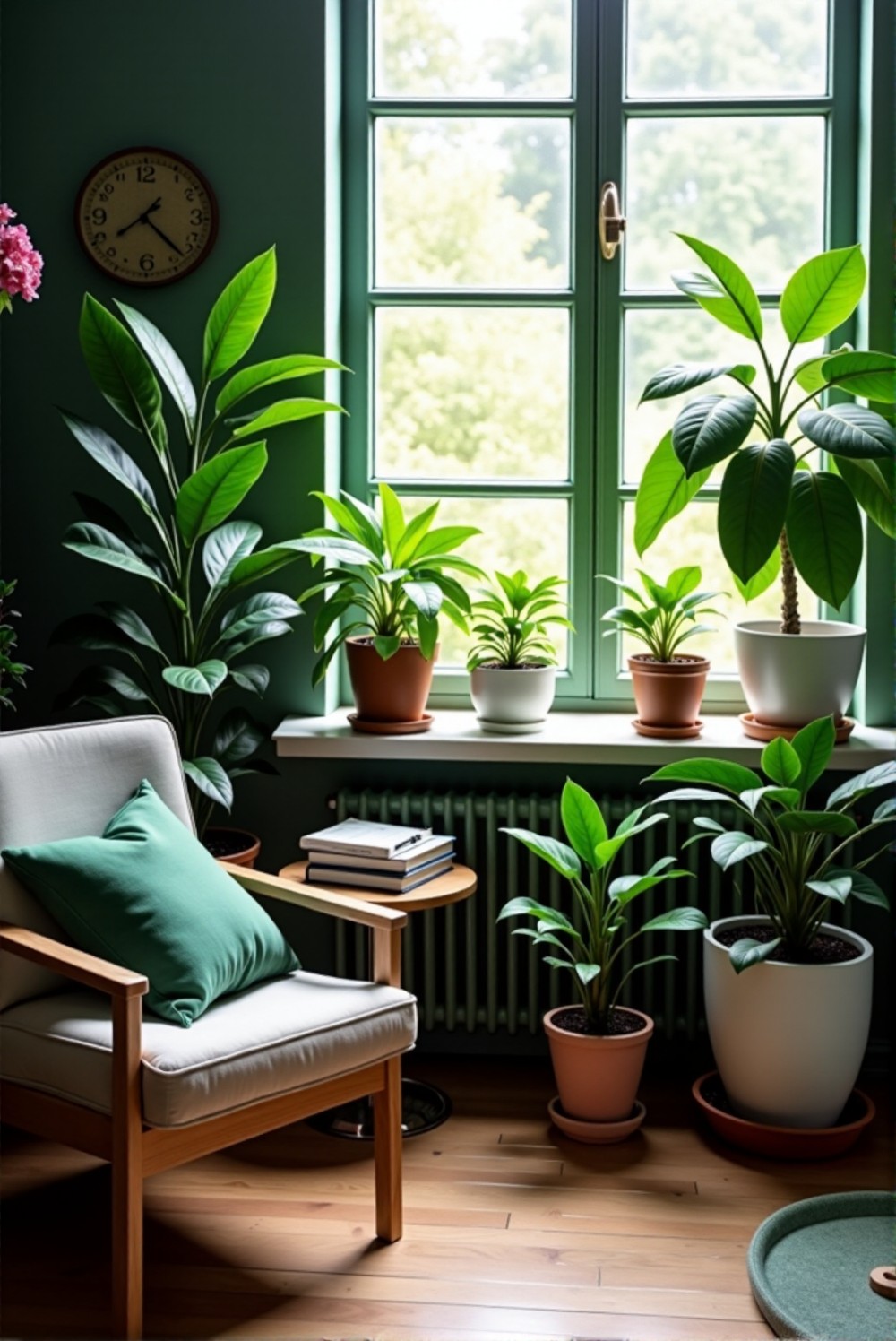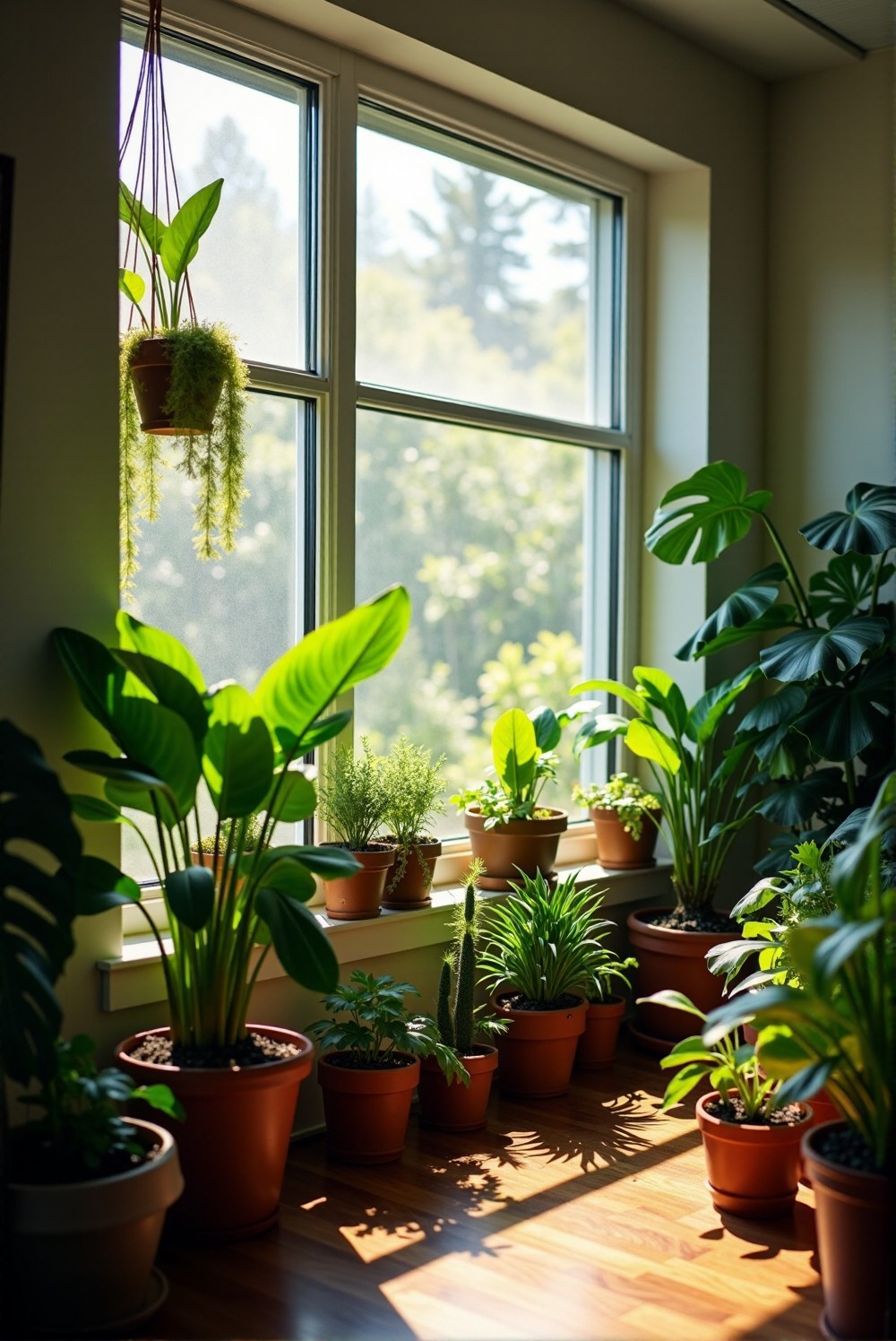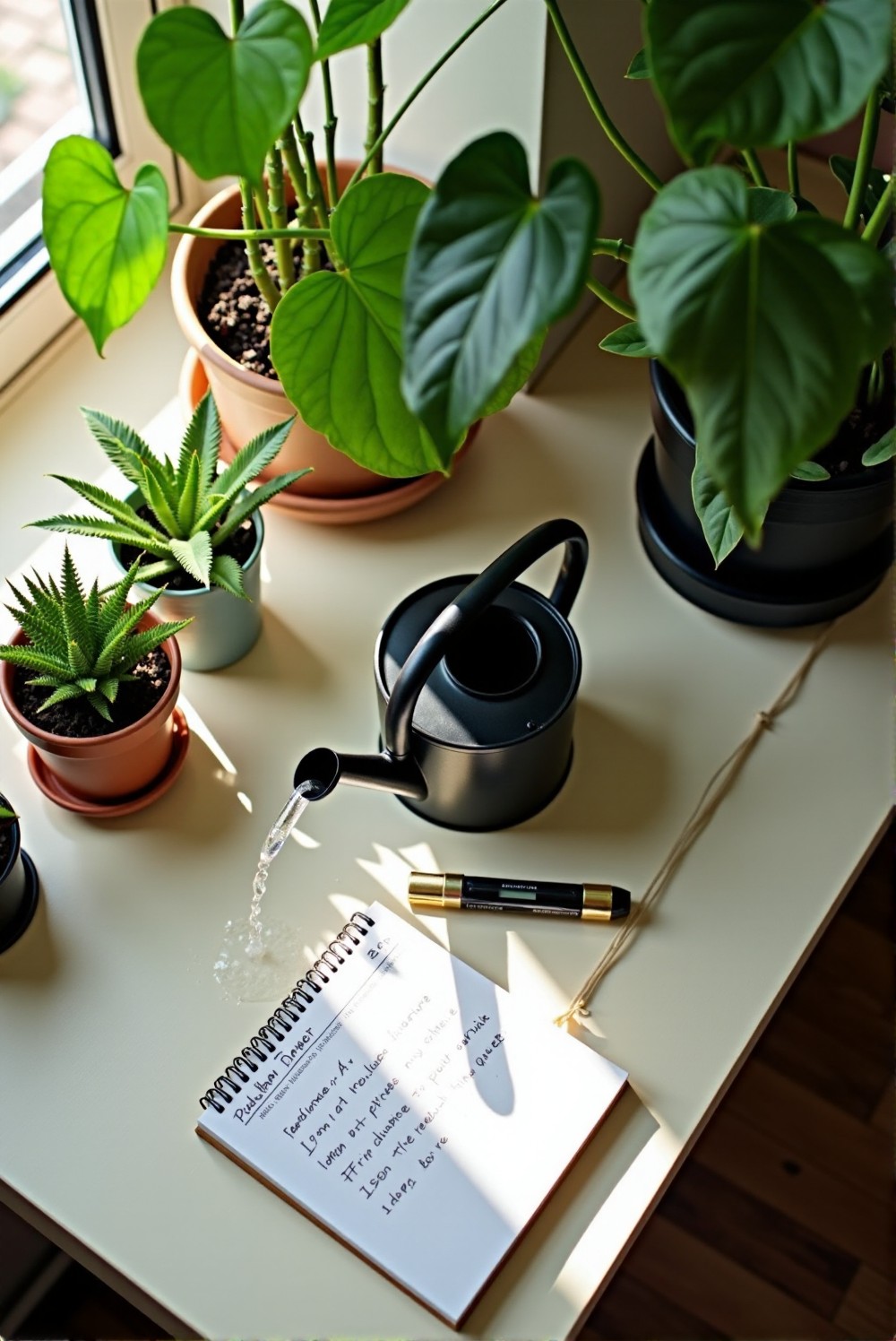
Bringing greenery into your home can create a warm and inviting atmosphere, but taking care of houseplants can sometimes feel like a challenge. Whether you’re a beginner or have some experience, knowing how to keep your indoor plants healthy is important.
With the right techniques, you can enjoy the beauty of nature indoors while making your living space feel fresh and lively. In this post, we’ll explore some essential tips that will help you select the best plants for your home, ensure they get the right amount of light, and maintain proper watering techniques.
Let’s dive into the secrets of successful indoor gardening!
1. Choosing The Right Indoor Plants

When selecting indoor plants, consider the light conditions in your home. Some plants thrive in bright light, while others prefer low-light areas.
Find a suitable spot for your new green friend before you shop. Think about how much time you can dedicate to plant care.
If you’re busy or often away, choose low-maintenance varieties that don’t need constant attention. Also, take into account the size of your space.
Taller plants can fill empty corners, while smaller ones work well on shelves or desks. Finally, think about your personal style.
Some people love colorful flowers, while others prefer green foliage. Choose plants that match your taste, and you’ll enjoy your space even more.
Choosing the right plants for your space can significantly enhance your environment. Whether you favor vibrant flowers or lush green leaves, the plants you select will reflect your personal style. Here are some tips to help you choose:
- Consider the color scheme of your space to ensure a harmonious look.
- Think about the lighting conditions; some plants thrive in bright light, while others prefer shade.
- Choose plants that are suited to your level of care expertise some require more attention than others.
- Mix different textures and shapes of leaves to create visual interest.
- Incorporate seasonal flowers for a changing display throughout the year.
2. Optimizing Light Conditions For Growth

Light is critical for plants. It impacts their ability to grow strong and healthy.
Light plays a vital role in the health and growth of plants. Here is a table summarizing the key effects of light on plant development.
| Light Type | Effect on Growth | Optimal Range (nm) |
|---|---|---|
| UV Light | Stimulates protective compounds | 10 – 400 |
| Blue Light | Encourages vegetative growth | 400 – 500 |
| Green Light | Less effective, used for photosynthesis | 500 – 570 |
| Red Light | Promotes flowering and fruiting | 620 – 750 |
| Far-Red Light | Influences germination and shade avoidance | 750 – 800 |
To ensure your plants thrive, place them in spots where they can get the right type and amount of light. Natural sunlight is best, but not all light is created equal.
Some plants, like succulents, love direct sunlight, while others prefer indirect light.
Try to observe how the light changes in your space throughout the day.
A south-facing window often provides the brightest light, while north-facing windows give softer, more diffused light. If your home lacks natural light, consider using grow lights.
These can mimic sunlight and help your plants get the energy they need to flourish.
Be mindful of how long your plants are exposed to light.
Most need about 12 to 16 hours of light each day, so you might need a timer if using artificial lights. Additionally, rotating your plants regularly can help each side get equal light exposure, which keeps them growing evenly.
Keep an eye out for signs of inadequate light. If you see your plants stretching towards the light or their leaves becoming pale, you might need to adjust their position or increase their light source.
Balancing these elements can lead to robust plant growth, ultimately making your indoor garden vibrant and lively.
3. Maintaining Proper Watering Techniques

Watering is a crucial part of plant care. Each plant has different needs, so it’s important to know how much water your plants prefer.
Overwatering can lead to root rot, while underwatering can cause wilting. To find the right balance, check the soil moisture regularly.
Maintaining the right soil moisture is essential for healthy plant growth. Here are some tips to help you achieve the right watering balance:
- Use your finger to test the top inch of soil; if it feels dry, it’s time to water.
- Consider the type of plant; some require more moisture than others.
- Adjust your watering schedule based on the season and weather conditions.
- Ensure pots have drainage holes to prevent excess water accumulation.
- Invest in a moisture meter for accurate readings of soil moisture levels.
Stick your finger about an inch into the soil. If it feels dry at that depth, it’s time to water.
If it still feels moist, wait a few days before checking again. Always water thoroughly until you see some water draining from the bottom of the pot.
This ensures the roots are getting enough moisture.
Be mindful of the time of day you water your plants.
Early morning is often the best time, as it allows the plants to absorb moisture before the heat of the day. Avoid watering in the evening, since excess moisture can promote fungal growth.
Consider using a watering can with a long spout to reach tricky spots. This helps you water evenly without splashing.
Also, if you notice that some leaves are turning yellow, it could be a sign of overwatering. Adjust your routine accordingly.
In winter, many plants need less water due to slower growth. Always observe your plants and adjust your watering as needed.
Keeping a consistent routine will help you notice any changes in your plants’ health.
Frequently Asked Questions
This FAQ section aims to answer common questions about growing house plants indoors, focusing on selection, light conditions, and watering techniques.
What factors should I consider when choosing indoor plants?
When selecting indoor plants, it’s essential to consider the light conditions in your home. Some plants thrive in bright light, while others prefer low-light areas.
Additionally, evaluate how much time you can dedicate to plant care. If you’re often busy, opt for low-maintenance varieties.
Lastly, consider the size of your space and your personal style to choose plants that suit your environment and taste.
How can I optimize light conditions for my plants?
Light is crucial for the health of indoor plants as it directly impacts their growth. Observe how light changes in your space throughout the day to find the best spots for your plants.
For plants that require direct sunlight, place them near south-facing windows. If natural light is limited, consider using grow lights that mimic sunlight.
Monitor the duration of light exposure; most plants need between 12 to 16 hours of light daily. Regularly rotate your plants to ensure even light exposure on all sides.
What are the signs that my plants are not getting enough light?
If your plants are stretching toward the light or displaying pale leaves, it may indicate insufficient light. Check their positioning and increase their light source if necessary.
Pay attention to any unusual growth patterns, as these may also indicate a light deficiency.
Adjusting the location of your plants can lead to improved health and vibrancy in your indoor garden.
How often should I water my indoor plants?
The watering frequency depends on the specific needs of each plant. Regularly check the soil moisture levels by sticking your finger into the top inch of soil.
If it feels dry, then it’s time to water, ensuring you do so thoroughly until water drains from the bottom of the pot.
Also, be mindful of seasonal variations; many plants require less water during the winter months due to slower growth.
What watering techniques should I use for optimal plant care?
Using a watering can with a long spout can help reach those tricky spots while minimizing splashing. Always make sure your pots have drainage holes to avoid excess water accumulation.
Early morning is considered the best time to water, as it allows your plants to absorb moisture before the heat of the day.
Avoid watering in the evening when excess moisture may promote fungal growth.
How can I tell if I am overwatering my plants?
Yellowing leaves are a common sign of overwatering in plants. It indicates that the roots may be sitting in water, leading to root rot.
Always test the soil moisture before watering to ensure you’re not overdoing it.
Adjust your watering routine based on the plant’s health and the environmental conditions to foster robust growth.
What are the benefits of having indoor plants?
Indoor plants can enhance your living space by improving air quality and providing a sense of tranquility. They can also boost your mood and create a more inviting atmosphere.
Additionally, taking care of plants can be a rewarding and relaxing hobby, offering a break from daily stresses.
Ultimately, the right indoor plants can add beauty and calm to your environment.
Conclusion
Taking care of houseplants can be a rewarding hobby. By choosing the right plants, providing them with adequate light, and mastering your watering techniques, you can create a thriving indoor garden.